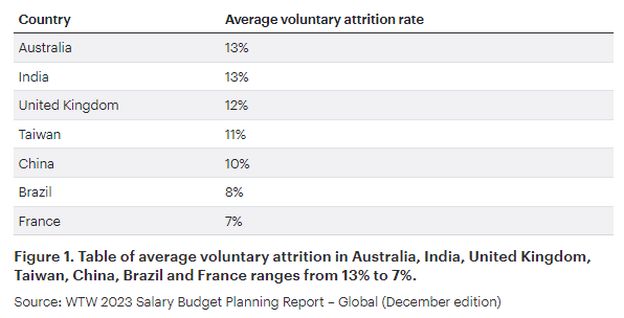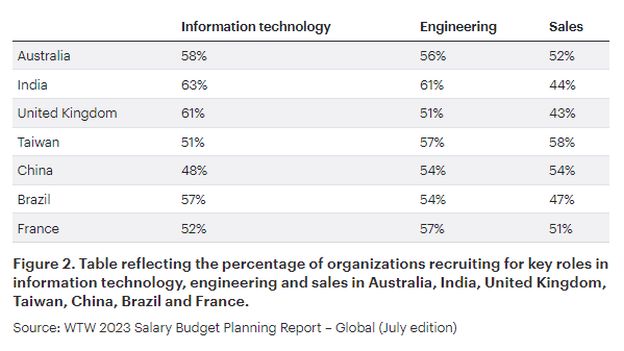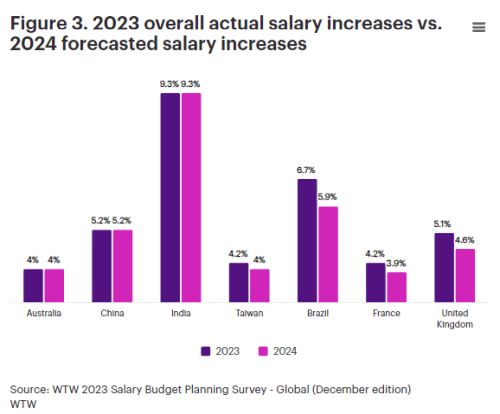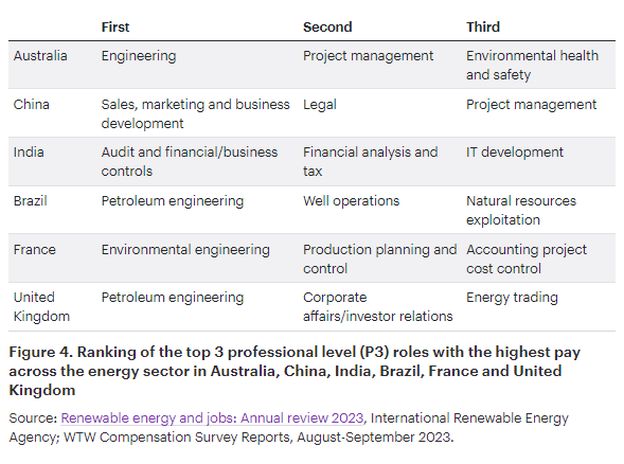As companies worldwide embrace cleaner energy, renewable energy organizations need to ensure they have the right talent to meet increased demand.
Organizations around the world are embracing paths to cleaner energy and working toward net-zero targets. This makes it especially important for renewable energy organizations to examine their current workforce, organizational structure, and approach to rewards to ensure they are prepared to meet increased demand in coming years.
WTW gathered and analyzed data specific to the renewable energy industry and identified key trends to watch this year.
Employee attraction and retention remains challenging
Across every industry, organizations continue to grapple with sourcing talent for major roles around the world (see Figures 1 and 2).
Voluntary attrition rates in key markets
Employers' plans for hiring in 2024
Salary budget increases continue
Because salary affects an organization's ability to attract and retain talent, this pattern of higher salary increases is expected to continue this year, but employers will be cautious about allocating their budgets (see Figure 3).
In addition, 60% or more of employers in every industry around the world have taken or are considering taking certain specific measures:
- Compensation review of specific employee populations
- Full compensation review for all employees
- Targeted increases for specific employee populations
- Hiring people in higher in their salary ranges
Employment within the renewable energy worldwide is continuously growing, now estimated at 13.7 million jobs globally, with China, Brazil and the European Union leading in employment. As organizations prepare for the talent war, Figure 4 reflects the top 3 functions at professional level (P3) with the highest pay across the energy and natural resources sector, where the workforce for the renewable energy industry will most likely be sourced from.
Top 3 functions with the highest pay
Trends expected to shape this year's reward decisions
01
Environmental goals
Environmental goals will remain a top priority. As governments continue pushing and introducing incentives for renewables and cleaner air, more investments are pouring in, an that will boost this sector. The industry's focus on environmental, social and governance (ESG) and sustainability efforts will be a focus this year and moving forward.
02
Regulatory changes
Given increasing legislation around pay transparency, organizations must prepare now to meet regulatory requirements. Objective job and pay structures, robust data and analytics and manager education will likely help your organization confidently deliver a pay narrative to internal and external stakeholders.
03
Changing operating models
As energy companies start shifting to renewables, business operating models will be significantly different and will have consequences for job architecture. This also means workforce requirements will be different. It is critical that companies broaden their talent strategies and take a fresh perspective toward their total reward proposition.
04
Emphasis on non-financial elements of pay
In response to a competitive job market coupled with inflationary pressures, organizations have increased their emphasis on the non-financial elements of pay, including fringe benefits, skills premiums, global recognition programs, employee assistance programs and so on.
Time to prepare for the future
The key asset renewable energy organizations will need to meet the challenges of changing priorities around ESG goals is data. Successfully building teams and attracting and retaining the right talent requires a data-based approach that will be defensible and competitive in the talent market.
The content of this article is intended to provide a general guide to the subject matter. Specialist advice should be sought about your specific circumstances.






